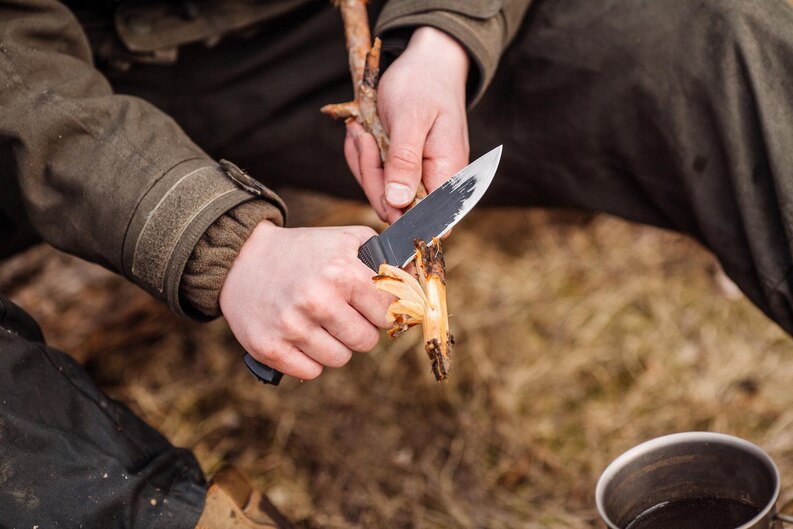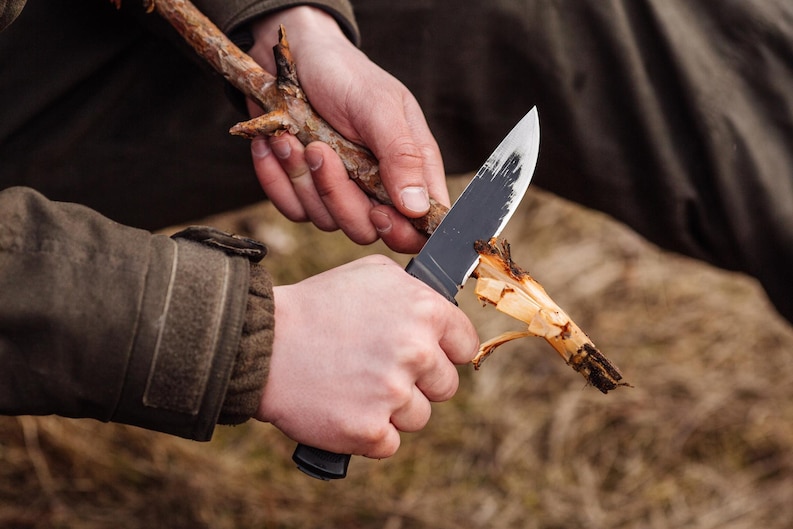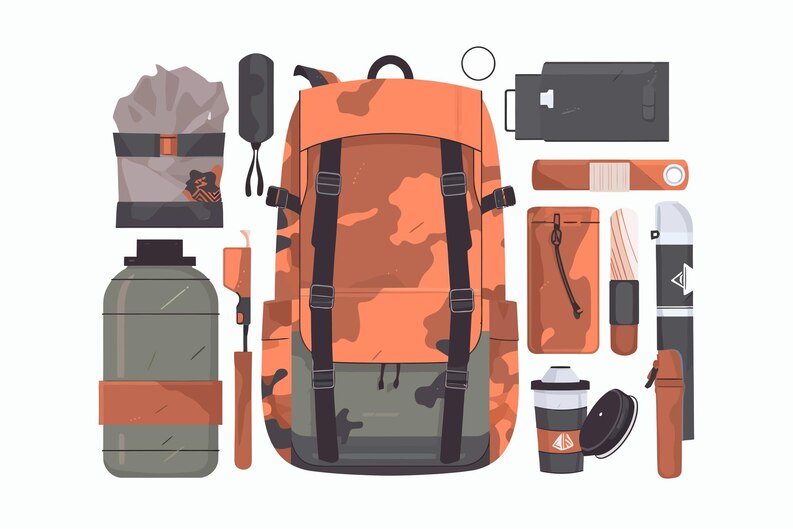A wilderness knife is a versatile tool that can be used for a variety of tasks, from making camp to preparing food to self-defense. However, it is also a dangerous weapon if not handled properly. This blog post will discuss the essential wilderness knife skills that you need to know in order to navigate emergencies with confidence.
In this discourse, we delve into the art of mastering wilderness knife skills, equipping adventurers with the expertise needed to navigate emergencies with unwavering confidence.
The Crucial Role of a Wilderness Knife

A wilderness knife is more than just a cutting tool; it’s a multifunctional asset that becomes an extension of its wielder’s survival instincts. Its primary purpose is to provide the means for shelter construction, food preparation, fire ignition, and even self-defense when circumstances turn dire. In emergencies, a well-crafted wilderness knife can be the key to crafting tools, procuring sustenance, and warding off potential threats.
Basic Knife Skills
The first step to learning wilderness knife skills is to master the basics. This includes learning how to hold the knife safely, how to use it to cut, how to sharpen it, and how to clean it. Once you have mastered the basics, you can move on to more advanced skills.
Advanced Knife Skills

Some of the advanced wilderness knife skills that you should learn include:
- How to make shelters and traps
- How to build fires
- How to prepare food
- How to treat injuries
- How to defend yourself
Safety tips when using a wilderness knife

- Always keep the knife sharp. A dull knife is more dangerous than a sharp knife.
- Be aware of your surroundings when using a knife. Make sure that there are no people or animals in the way.
- Never point the knife at anyone, even as a joke.
- Use the knife for its intended purpose. Do not use it as a screwdriver or pry bar.
- Be careful when sharpening the knife. Keep your fingers away from the blade.
- Store the knife in a safe place when you are not using it.
- By following these safety tips, you can help to prevent accidents and injuries.
Blade Selection and Maintenance

Selecting the right knife for wilderness survival is a critical decision. A fixed-blade knife with a full tang construction is preferred due to its durability and reliability. It’s important to choose a blade with a sharp, fine edge that’s easily maintainable even in the field. Regular maintenance, including honing and cleaning, ensures the knife remains at its optimal performance, ready to tackle any challenge that comes its way.
Firecraft and Shelter Building
When caught in the wilderness during an emergency, fire becomes a lifeline, providing warmth, light, and a means of signaling for help. A wilderness knife is invaluable in firecraft, aiding in the preparation of tinder, kindling, and fuel. Its sharp edge can efficiently strip bark and split wood for various fire-starting techniques.
Shelter construction is equally vital for surviving the elements. The knife can be employed to cut branches, notch logs, and carve stakes for creating a secure and weather-resistant shelter. A combination of knowledge and precise knife skills allows for the assembly of shelters that provide protection against rain, wind, and cold temperatures.
Food Preparation and Procurement
In a survival scenario, sourcing food can be a daunting task. A wilderness knife simplifies this challenge by enabling the preparation of gathered or hunted food. Its blade can be used to clean and skin animals, fillet fish, and chop vegetables, making them suitable for consumption. Moreover, the knife is indispensable in crafting hunting and fishing implements, increasing the chances of securing sustenance.
Navigation and Signaling
Lost in the wilderness, the ability to navigate accurately is paramount. A wilderness knife, in conjunction with basic orienteering skills, can assist in creating directional markers, clearing paths, and even carving rudimentary maps. Its reflective blade can also serve as a signaling device to attract attention from potential rescuers, increasing the chances of a successful rescue.
First Aid and Self-Defense
Emergencies often bring unforeseen injuries. A wilderness knife can be employed to fashion splints, bandages, and even crude medical tools. Its use in first aid extends beyond wounds – it can help remove splinters, fashion slings, and even assist in minor surgical procedures if necessary.
In dire situations, the wilderness can also harbor threats. While avoidance is key, a survivalist armed with a wilderness knife gains a degree of self-defense capability. The knife can deter predators and potential assailants, providing a last line of defense when retreat is not an option.
Skill Acquisition and Practice
Proficiency in wilderness knife skills is not achieved overnight. It demands consistent practice, hands-on experience, and the willingness to learn from mistakes. Aspiring survivalists must familiarize themselves with various grips, cutting techniques, and safety measures to ensure they can wield the knife effectively without endangering themselves.
Conclusion
Mastering wilderness knife skills is akin to learning a language spoken by the natural world. It empowers adventurers to face emergencies head-on, equipped with the confidence that their survival is within their grasp. From firecraft to shelter building, food procurement to self-defense, a well-honed wilderness knife is an embodiment of preparedness, transforming the unforgiving wilderness into a realm where confidence reigns and survival is not a mere possibility, but a reality.
So, as the sun sets on the horizon and the wilderness whispers its unpredictable tales, let the gleam of a sharp blade remind you that with skill and confidence, you can navigate even the most daunting emergencies nature throws your way.











